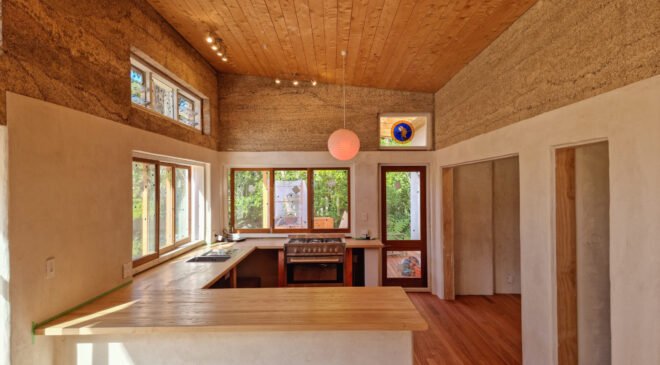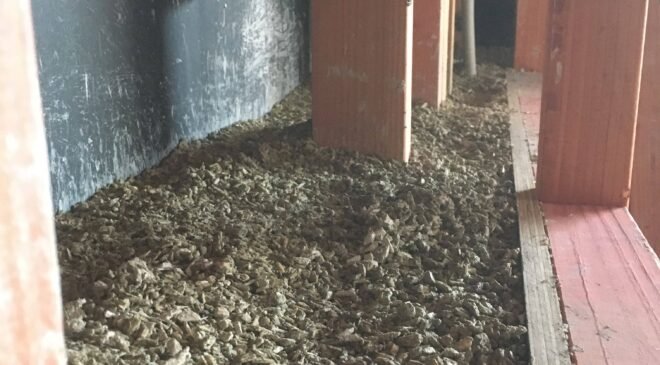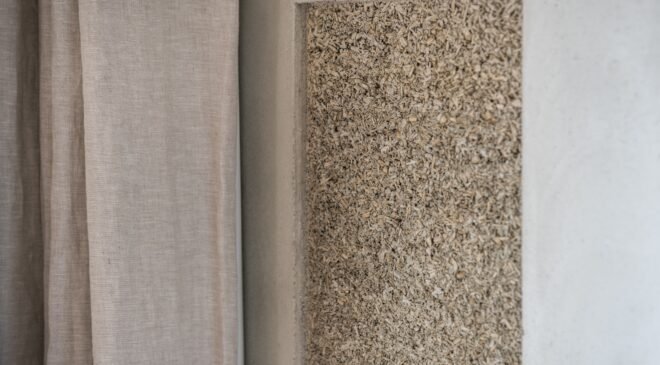The Hemp Building Association of New Zealand (HBANZ) is raising awareness of the benefits of hempcrete construction in the country and has its sights set on large building companies, and ultimately the New Zealand building code.
HBANZ was established at the end of 2019. The association uses its social media platforms to spread information on the latest industrial hempcrete building news, both what’s happening in Aotearoa and housing developments from hempcrete builds worldwide.
The latest international news is that in New York, the International Code Council (ICC) approved Hempcrete for the USA International Residential (Building) Code. This was due to the hard work of the US Hemp Building Association.
According to HBANZ co-founder, Jo Say, “We’re just starting out on this journey. Our vision is to get hempcrete added as a separate standard within the New Zealand building code.”
America’s latest news is inspiring to HBANZ and to have the same thing happen in New Zealand could take about two years, Jo says.
Industrial Hemp (cannabis) contains 0.35 percent or less THC. Industrial hemp has been legal to grow in the country since 2006. Hempcrete construction uses industrial hemp hurds to build houses. The stalk gets processed into two products: the outer stem (the bast fibres) and the inner stem which is the hurd.
Jo defines hemp as a “miracle plant that can be manufactured into almost anything.”
Since 2006, New Zealand farmers have been able to grow industrial hemp legally but couldn’t process the hemp stalk.
Therefore, hempcrete builders had to import the hurds for construction from Australia. However, a break-line decortication (processing) facility opened in Christchurch in 2021 funded by Carrfields, New Zealand Yarn, and Hemp New Zealand.
“That’s what’s going to help enable the New Zealand hempcrete construction industry to really take off now,” Jo says.
The other essential part of hempcrete is the binder. A binder is like the glue, Jo says. The binders used to build the New Zealand hempcrete houses have so far been imported from Australia.
However, Kerikeri-based Rockstead Construction owner and hempcrete builder Doug Sturrock are currently developing a New Zealand first – a hempcrete binder sourced from all local ingredients. The binder will be commercially produced in Kerikeri and hopefully will be available for use from early 2023.
Rockstead Construction and HBANZ aim to develop a hempcrete walling system with Codemark accreditation. This system is an important part of the scaling up of the hempcrete construction industry, Jo says.
Find more information on Rockstead Construction check here: www.rocksteadconstruction.co.nz
The benefits of using hempcrete are:
1. It’s environmentally friendly: every hempcrete building is a carbon sink, which is essentially sucking the carbon dioxide out of the atmosphere rather than generating it. The global construction industry is creating 40 percent of carbon dioxide emissions.
2. It has a high insulation R-value and a strong thermal mass performance, which means there’s a very stable temperature inside hempcrete buildings. Thus, the heating and cooling of the hempcrete- built home is minimal.
3. Hempcrete has a natural hygroscopic capacity, which means there’s humidity regulation occurring in a hempcrete house. Hempcrete doesn’t produce mould and condensation, so the walls inside hempcrete houses are “literally breathing,” Jo says.
4. Hempcrete is also non-combustible, has great acoustic performance, good- quality seismic performance (hempcrete has 75 percent less chance of cracking than concrete in an earthquake), and being a quarter of the weight of concrete has positive implications for foundation design.
5. Hempcrete houses are drier and warmer than the average house. A quarter of Kiwis live in damp houses, which causes health issues. Therefore, hempcrete houses are some of the healthiest homes in New Zealand.
Jo is very passionate about the association and educating others on the topic.
She says her vision is that “One day every new home in New Zealand will be built from hempcrete”.
Another goal of HBANZ is to help establish hempcrete construction trade apprenticeships. Jo says there’s real business potential for contractors to install hempcrete instead of licensed building practitioners.
Doing so could increase the number of hempcrete builds in big subdivisions. Hempcrete can be used to build residential houses and also large commercial buildings. In the UK, a large Marks and Spencer superstore is made from hempcrete.
At present, prices for hempcrete houses are about 10 to 15 percent more than an average house price.
There’s only a small number of hempcrete houses built in the country thus far. However, there’s a lot of growing interest in sustainable construction and hempcrete in particular.
Jo says HBANZ spreads awareness about the benefits of hempcrete construction through word of mouth, public speaking events, social media, talking to various people daily, podcasts, and other media interviews.
The New Zealand government is committed to new builds being carbon neutral by 2032.
At only a decade away, hempcrete is the only carbon-negative construction available in the country today and as such, will be a sought- after material for builders looking to build carbon neutral.
“We’re running out of time,” Jo says as she refers to climate change.
“Building with hempcrete can literally help save our planet.”

Ekhart Construction is a New Zealand owned and operated hempcrete construction company in Wanaka

Inside Toby Rickett’s (a professional voice over artist) hempcrete house and recording studio in Manganui

Erkhart Construction uses hempcrete to build sustainable eco-friendly homes for Kiwis

Another photo of hempcrete taken by Erkhart Construction
This article has been reproduced with kind permission from Natasha Parrant (author) and Builders and Contractors magazine (Issue #135). Photo credits – Toby Ricketts and Erkhart Construction.


